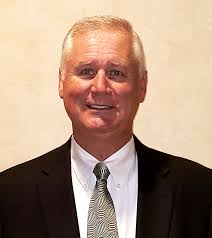If you invest in various plans such as IRA and 401(k), you would know that for tapping a 401(k) free of the 10% early withdrawal penalty, you must be at least 59½ years of age. But what if you want to retire earlier than that, say by age 55, and still be able to take out penalty-free distributions? The good news is you can. Are the ‘hows’ and ‘when’ already running through your mind? This blog will answer all your questions.
What is the Rule of 55?
According to the rule of 55, any worker who leaves the job earlier than their retirement can take penalty-free retirement distributions from their employee retirement plan after reaching 55.
This rule allows people who want to retire early to get a normal cash flow and enjoy the benefits of their retirement plan sooner than expected. And as mentioned above, early withdrawal from a 401(k) plan is subjected to a 10% penalty. Hence, the rule of 55 ensures you start receiving your retirement funds after reaching 55 without triggering any penalties!
For example, if you are laid off at the age of 57 and don’t have any regular income from your work, you can dip into your 401(k) funds by withdrawing without facing penalties. This can happen if you withdraw them after the age of 55. So, if you got laid off after turning 55, you can make penalty-free withdrawals from the distribution.
How to Use the Rule of 55 to Fund Your Early Retirement?
Early retirement can come with heavy penalties during retirement fund withdrawal for people who don’t know the rule of 55! Here are the steps you should follow to fund your early retirement plans penalty-free:
- You Have to Leave the Year or After You Turn 55: Getting laid off or leaving the organization in the calendar year you turn 55 or more can make you eligible for the withdrawal of penalty-free 401(k) or 403(b) retirement funds. This means that you will only benefit from the rule of 55 if you retire during or after 55 and not before that! For example, you cannot withdraw penalty-free funds if you have retired at 53.
- You Must Withdraw From Your Current 401(k): The rule of 55 only applies to funds in your recent company’s retirement plan. You cannot reach out to your previous company’s old 401(k) plan and use that money. Moreover, this rule of 55 does not apply to an IRA.
- You Can Withdraw Early Even with Another Job: As long as you are withdrawing money only from the retirement account you took early retirement, there’s no such rule that can stop you from working part-time or full-time.
Other Ways to Fund a Penalty-free Early Retirement
We have only discussed using the rule of 55 correctly for withdrawing penalty-free retirement funds. But that’s not the only way to do that. There are other ways that can help you get rid of the 10% penalty:
- Permanent disability
- Active duty or qualified reservist
- Medical expenses exceeding the 7.5% gross income mark
- Withdrawals because of IRS levy plan
- Disaster distributions
When Should You Use the Rule of 55?
Always ensure you understand everything before deciding to go for early retirement. Here are some situations in which you can use the rule of 55:
- You are willing to retire early: The rule of 55 will help you cover your expenses. If you decide to take another job, you can continue receiving the funds from the withdrawn 401(k) plan. Remember that you are free from the 10% penalty, but you still have to pay regular taxes on them.
- You want to get rid of RMDs: After the age of 73, you have to take Required Minimum Distributions (RMDs) from your retirement accounts. But, if you use the rule of 55, you will have a reduced amount on your RMDs.
Exception in the Rule of 55
The one exception to tapping into your retirement savings early and not paying any penalty on the withdrawals is that you have to leave your employer in the year you turn 55 or older. If you do so, you can take distributions from your 401(k) without penalty, but you would still owe tax on the withdrawals. For example, you have to pay $2,500 on a $10,000 payout at a 25% tax rate, but you will avoid the 10% ($1,000 in this case) early withdrawal penalty.
It doesn’t really matter how you part ways with your employer. You can retire, get laid off or even get fired, but as long as you are 55 years by the end of the year you leave the job, the rule will apply. If you leave your job in January and turn 55 in December, then the 401(k) or 403(b) payouts anytime during the year are penalty-free. However, if you retire in December and turn 55 the following January, you will be stuck with the penalty until you turn 59½ years.
Plans Supporting this Exemption
It is important to remember that this exemption is only applicable to the funds in your 401(k) and 403(b) accounts. You must already be familiar with the former. Let’s take a quick peek into the latter.
403(b) is a retirement plan created for certain employees of the non-profit sector, public schools, and tax-exempt organizations and ministers. Individual 403(b) accounts are established and maintained by eligible employees. Those with the 403(b) plan can match payroll-deducted contributions, which is an employment incentive. These contributions then grow tax-free, often for decades, resulting in a significant increase in the initial investment.
If you turn 55 the year you leave your employer, you can withdraw penalty-free income through these two accounts; however, if you decide to roll those funds over into an IRA after you leave your job and then want to withdraw some money, you’ll be subjected the 10% early withdrawal penalty until you turn 59½.
What are Alternatives to the Rule of 55 Withdrawals?
The rule of 55 is not the only way you can access penalty-free early retirement funds! A Substantially Equal Periodic Payment (SEPP) exemption or IRS Section 72(t) distribution is one method to consider.
Decide Wisely!
If you can wait until you reach 59 ½, you should do that. However, if you think you are mentally and financially ready to retire early, the rule of 55 is one of the most flexible options!
So, carefully consider your options during retirement planning and choose the plan that benefits you the most. Our plans allow for this type of distribution. At Self Directed Retirement Plans LLC we can assist with this process but it is always wise to consult a tax professional.

Rick Pendykoski is the owner of Self Directed Retirement Plans LLC, a retirement planning company based in Goodyear, AZ. He has over three decades of experience working with investments and retirement planning, and over the last ten years has turned his focus to self-directed ira accounts and alternative investments. If you need help and guidance with traditional or alternative investments, call him today (866) 639-0066.





Please let me know if there is a way my mother could use her self-directed IRA to obtain a reverse mortgage without paying tax. My mother is 92 and she needs to move to a home that she can be more comfortable residing in and have access to more help. She is very concerned about withdrawing her IRA due to the tax implications. Thank you.
Hi Rene,
A reverse mortgage is determined by the equity in the real estate and doesn’t have anything to do with other assets. She may wish to think about a reverse mortgage and minimal distributions above the RMD amount she is already taking – just take what you need to lower your taxes.
I have 1 401k with 155,000 in it. I changed employers 11 months ago and started a different 401k. my age is 59 yrs 1 month. I owe 34,000 on my house. Would it be wise to take enough to payoff my house and build a garage? say $50,000.
This is a personal decision. By taking the $50k, you are reducing the capital which cannot earn interest any longer so you have to think “how much am I losing” over time. If you were our client with a self-directed 401 k, you could borrow $50k from the plan and fund the mortgage and garage. This is a loan, not a taxable distribution and you have five years to pay it back, thus keeping your capital intact for compounding